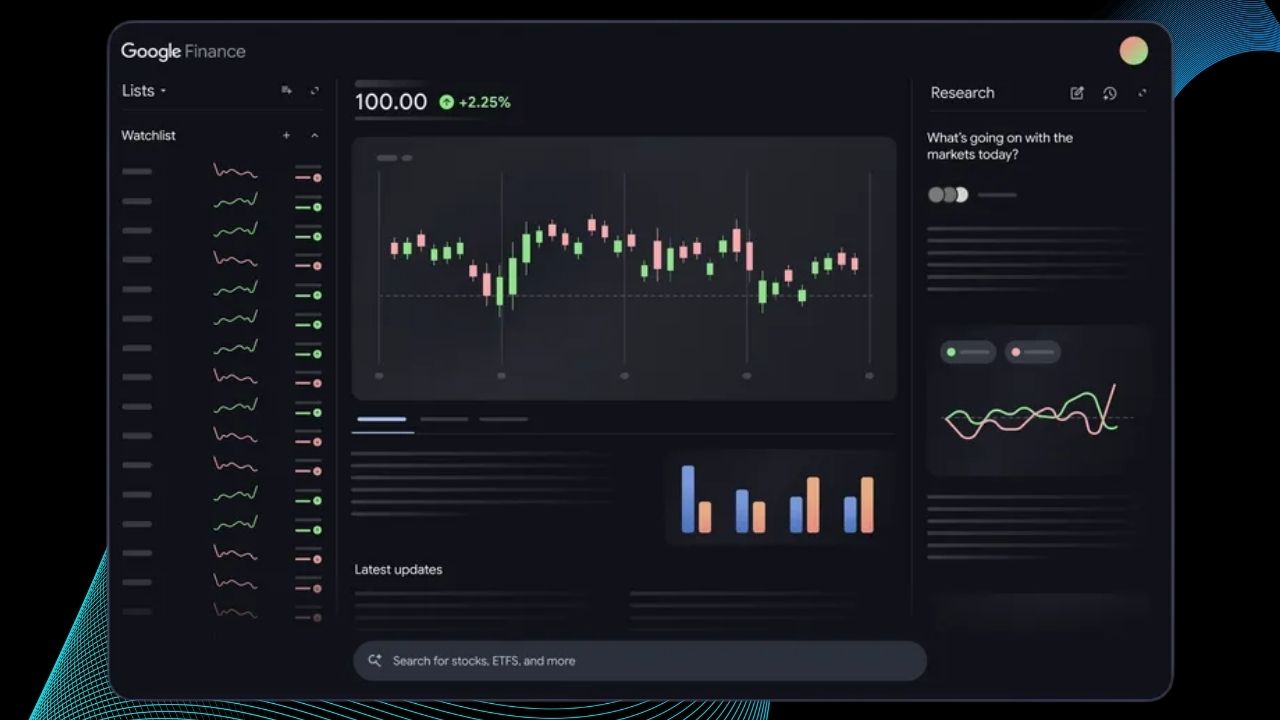Next Generation of 6G Wireless: As the world anticipates the rollout of 6G wireless technology, scientists and engineers are looking far beyond traditional computing to meet the ultra-high demands of the next era. One of the most promising contenders in this technological evolution is the photonic processor—a chip that uses light instead of electricity to process data.
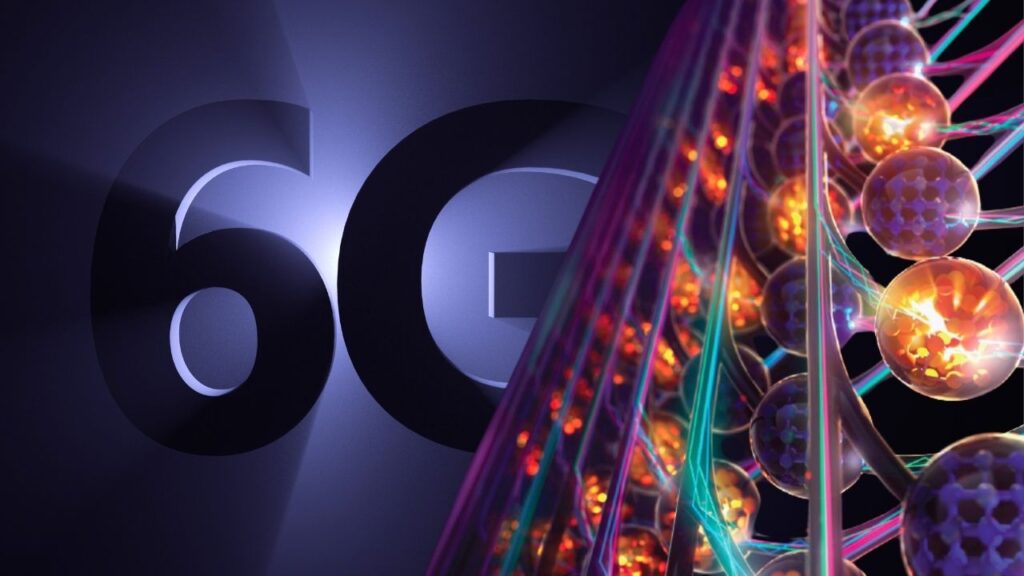
While 5G is still expanding globally, 6G is already being developed by researchers, governments, and tech giants, aiming to deliver speeds up to 1 Tbps, sub-millisecond latency, and the capacity to connect billions of devices simultaneously. These goals will strain the limits of conventional electronic-based processing, which is where photonic processors come into play.
Next Generation of 6G Wireless
| Feature | Details |
|---|---|
| Technology | Photonic processors use photons (light particles) for data transmission and computation, offering speed and bandwidth advantages over traditional electronic chips. |
| 6G Capabilities | Targets: 1 Tbps speed, <1ms latency, AI-native networking, THz communication, edge intelligence. |
| Benefits | Faster data handling, lower power consumption, high-frequency compatibility, low latency, reduced thermal output. |
| Applications | Smart cities, autonomous vehicles, real-time XR/VR, digital twins, satellite communications. |
| Challenges | Manufacturing costs, integration with existing electronics, thermal and signal management, fabrication scale. |
| Recent Breakthroughs | Programmable photonic ICs, microwave photonic filters, 2D photonic time crystals, photonic clock chips. |
| Official 6G Vision | ITU 6G Focus Group |
The future of 6G wireless communication will be shaped by technologies that break past the limits of electronics—and photonic processors are leading that charge. With their speed-of-light performance, THz compatibility, and energy efficiency, they offer the capabilities that next-generation networks demand.
Though still in development, recent breakthroughs in programmable chips, photonic filtering, and time crystal surfaces are rapidly pushing this tech from lab to market. With global investment pouring in and standardization underway, photonics is not just a futuristic concept—it’s an emerging pillar of the 6G era.
What Are Photonic Processors and How Do They Work?
A photonic processor uses photons—particles of light—to compute and transmit information, rather than electrons like in traditional processors. These chips are built using silicon photonics, an emerging technology that combines the properties of optics with the manufacturing ecosystem of silicon-based electronics.
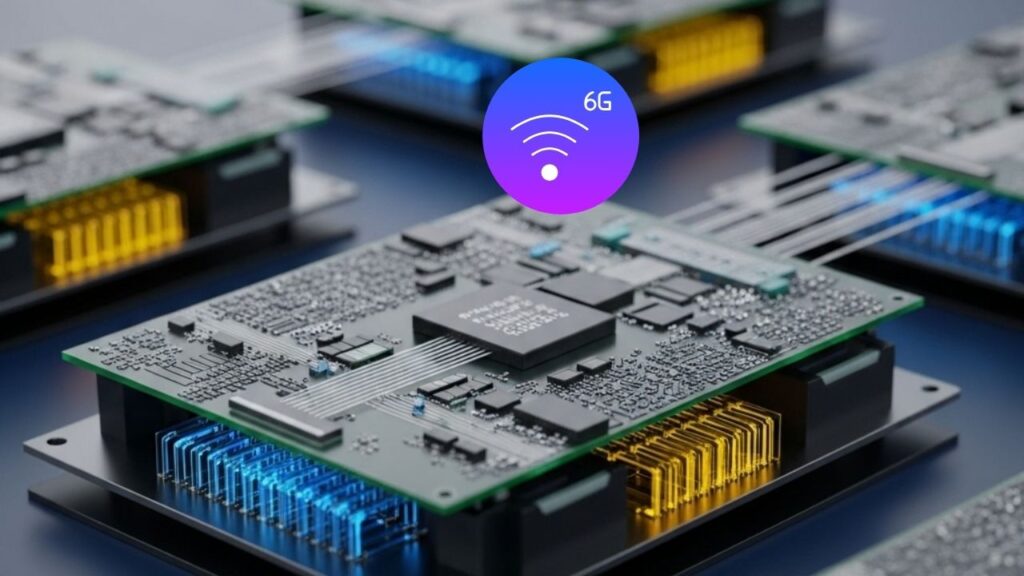
Instead of wires and transistors, photonic chips use:
- Waveguides to steer light beams
- Modulators to encode data into light
- Resonators to filter or delay signals
- Photodetectors to convert light into electrical output
This architecture allows data to travel at the speed of light, resulting in ultra-fast processing and low heat generation, critical for dense, high-speed applications like 6G networks.
Why Photonics Is Critical for 6G
1. Terahertz Band Communication
6G will rely on terahertz (THz) frequencies ranging from 100 GHz to 10 THz, which offer wider bandwidths but pose transmission and interference challenges. Photonic processors, operating naturally in these high-frequency ranges, are well-suited to manage signal processing for THz communication.
2. Ultra-Low Latency and Massive Bandwidth
Traditional electronics struggle to achieve the <1ms latency targets of 6G. Photonic chips can handle data rates exceeding 1 Tbps, enabling faster packet processing, dynamic spectrum allocation, and real-time adaptive beamforming—essential for autonomous systems, holography, and AR/VR.
3. Power and Thermal Efficiency
Wireless base stations, satellites, and edge devices will require energy-efficient processors. Photonics reduces resistive heating and eliminates the need for constant signal amplification, which can cut energy usage by 10x or more, based on lab tests at MIT and Stanford.
According to Intel Labs, photonic interconnects can reduce energy per bit from 10 pJ to under 1 pJ, improving sustainability for large-scale infrastructure.
Breakthrough Research and Developments
1. Programmable Photonic ICs (University of Southampton & MIT)
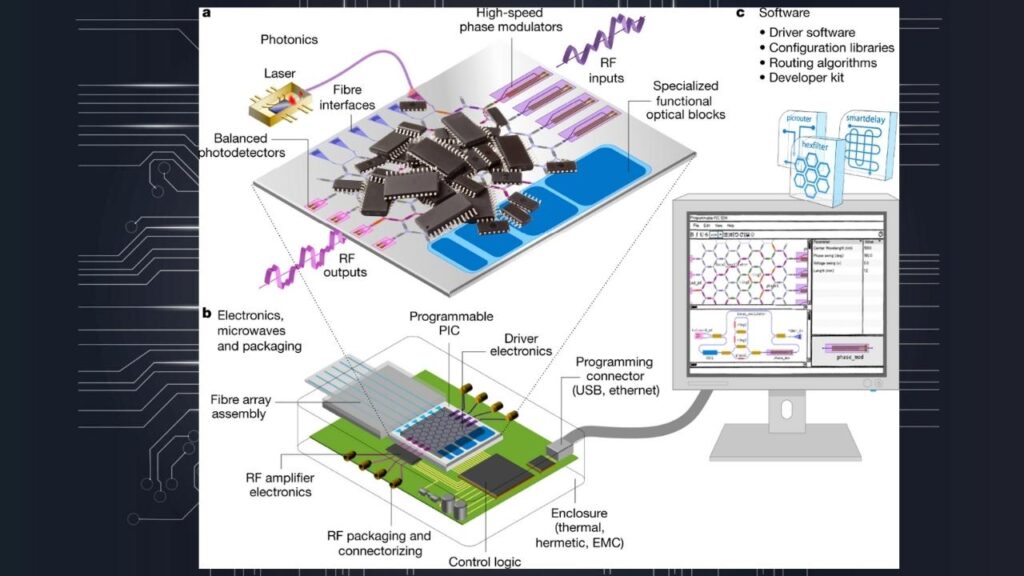
In 2024, researchers demonstrated a fully-programmable photonic chip for radio-frequency applications. It can handle beamforming, filtering, waveform synthesis, and frequency shifting using microring resonators and optical phase shifters. The chip supports 100+ GHz bandwidth with less than 10W of power—ideal for mobile base stations and UAVs.
2. Microwave Photonic Filters (Peking University)
These filters clean up noisy signals in RF systems by using optical delay lines and micro-combs, enabling high-precision filtering above 30 GHz. The result: interference-free communication, vital for 6G’s crowded spectral environments.
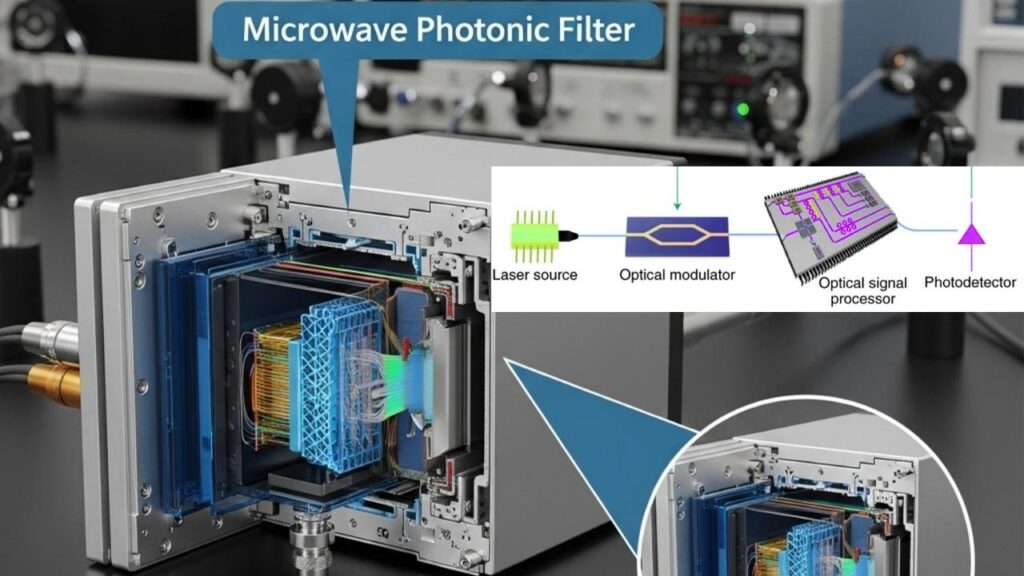
3. 2D Photonic Time Crystals (Karlsruhe Institute of Technology)
In early 2025, a team created time-varying photonic metasurfaces that amplify and manipulate surface waves. These structures can dynamically direct signals across surfaces, useful for reconfigurable intelligent surfaces (RIS)—a foundational element of 6G architecture.
4. Photonic Clock Chips (Chinese Academy of Sciences)
This invention integrates a microresonator frequency comb and a silicon-based oscillator to synchronize signals across MHz to THz domains. It delivers precision timing essential for coordinated 6G networks, space communications, and industrial automation.
Real-World Applications: Where Will Photonics Shine in 6G?
Autonomous Vehicles and Drones
Photonics enables fast sensor data processing for real-time decision making. It also allows cars and drones to communicate over multi-gigabit wireless links with edge servers for navigation, hazard detection, and route optimization.
Smart Cities
With millions of IoT sensors deployed in cities, photonic processors can support instantaneous analysis of traffic, pollution, energy, and safety systems—making urban living smarter and safer.
Global Connectivity via LEO Satellites
Photonics’ speed and energy efficiency make it ideal for satellite systems like Starlink or OneWeb, which will play a major role in delivering 6G to remote regions.
Remote Surgeries and Tactile Internet
6G aims to support real-time haptic feedback and robotic surgery over wireless links. Only photonic chips can meet the ultra-low latency and zero-loss data transfer required for such applications.
Challenges and Barriers to Mass Adoption
Despite their promise, photonic processors face notable obstacles:
1. Fabrication Complexity
Unlike CMOS electronics, photonics requires sub-wavelength accuracy and complex materials (e.g., InP, SiN, GaAs). Standardizing these into scalable manufacturing processes is ongoing.
2. Cost
Current photonic chips are 2–5 times more expensive than traditional silicon chips. Mass production techniques must mature before they become economically viable for mainstream telecom deployment.
3. Integration with Existing Infrastructure
Photonics must be co-packaged with electronics, requiring hybrid integration, novel materials, and advanced thermal management strategies.
According to IEEE, developing photonic-electronic co-design frameworks is critical for enabling chiplets and modular processors for 6G use.
Global Efforts and Standardization
Governments and corporations worldwide are heavily investing in photonic R&D:
- EU’s Horizon Europe: Funding over €1 billion for photonic-enabled 6G projects.
- DARPA’s PIPES Program: Developing optical RF signal processors.
- Japan’s NICT: Working on terabit-scale photonic networks for post-5G.
- ITU-R and 3GPP: Early discussions on photonic interface inclusion in 6G.
These investments signal a growing global consensus that photonics is key to 6G success.
Attosecond ‘Clock’ Measures Electron Tunneling Time With Unmatched Precision
New Polymer Breakthrough Boosts Durability and Sustainability Using Green Chemistry
Physicists Recreate Extreme Quantum Vacuum Conditions in the Lab — A New Era for Particle Physics
FAQs About Next Generation of 6G Wireless
Are photonic processors in commercial use yet?
They’re in limited use, especially in data centers and experimental telecoms, but mass consumer deployment is likely post-2028, aligning with early 6G rollouts.
Do photonic processors replace CPUs and GPUs?
No. They complement them, particularly for high-frequency signal processing, AI acceleration, and wireless communication. Traditional processors will still be used for general-purpose tasks.
Is photonic processing safe?
Yes. Photonic chips operate using non-ionizing light, which is inherently safe and poses no radiation risk to humans or animals.
Can existing 5G infrastructure be upgraded to photonics?
Some parts—especially optical backhaul and data centers—can integrate photonic components. However, full deployment in wireless towers and edge devices will require new architectures.



